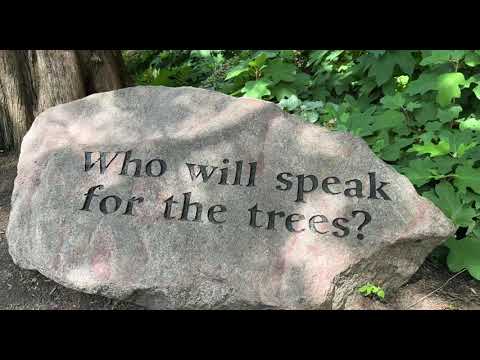Summary:
1. The Cincinnati Zoo & Botanical Garden has achieved Level IV Accreditation as an ArbNet Arboretum.
2. The ArbNet Accreditation Program recognizes aArboretaglobally based on development, capacity, and professionalism.
3. The zoo is now listed in the Morton Register of Arboreta, a database of organizations showcasing trees and plants for public benefit, science, and conservation.
4. The Cincinnati Zoo & Botanical Garden offers visitors a unique and fascinating experience to explore the natural world.
5. the zoo highlights its commitment to conservation, education, and wildlife preservation through its arboretum accreditation.
The Cincinnati Zoo & Botanical Garden is renowned not only for its captivating animal exhibits but also for its beautiful botanical collection. This year, the zoo has achieved an extraordinary milestone by becoming the world’s newest Level IV Accredited ArbNet Arboretum. The ArbNet Arboretum Accreditation Program and The Morton Arboretum have recognized this prestigious accomplishment.
ArbNet Accreditation is a global initiative that evaluates and acknowledges arboreta at various stages of development, capacity, and professionalism. Being awarded Level IV Accreditation represents high excellence and dedication to maintaining an exceptional arboretum. The Cincinnati Zoo & Botanical Garden has demonstrated its commitment to the preservation and study of its diverse tree and plant collections.
The zoo joins a prestigious list of organizations worldwide that exhibit trees, shrubs, and other woody plants for the public’s enjoyment, scientific research, and conservation efforts through its inclusion in the Morton Register of Arboreta. This recognition further solidifies the zoo’s position as a leader in promoting botany and horticulture.
Visitors to the Cincinnati Zoo & Botanical Garden can expect to embark on a unique and fascinating journey through its arboretum. With over 70 acres of beautifully curated gardens, visitors can immerse themselves in the wonders of nature. Each area showcases a variety of species, habitats, and landscapes, providing a diverse and educational experience.
One of the highlights within the nursery is the E.O. Multi-Use Trail, named after Dr. E.O. Wilson, an esteemed scientist and conservationist. This trail takes visitors on a captivating adventure, allowing them to explore and appreciate the intricate relationships between plants, animals, and the environment. Along the trail, informative signage sheds light on the importance of biodiversity and the conservation efforts undertaken by the zoo.
The Cincinnati Zoo & Botanical Garden has also established itself as an environmental conservation and sustainability leader. The zoo has implemented numerous initiatives to protect and restore native habitats, enhance biodiversity, and reduce its ecological footprint. By incorporating these practices into its operations, the zoo sets an example for other institutions, emphasizing the importance of environmental stewardship.
Education is at the heart of the Cincinnati Zoo & Botanical Garden’s mission. They strive to inspire and engage visitors of all ages through interactive learning experiences. The nursery provides a dynamic context for teaching visitors about trees and plants’ critical role in sustaining ecosystems and combating climate change. Through guided tours, workshops, and interactive exhibits, visitors gain a deeper understanding of life’s intricate web and conservation’s importance.
In addition to its educational initiatives, the zoo actively participates in numerous research programs and collaborations. By partnering with local universities, conservation organizations, and scientific institutions, the zoo contributes to our understanding of the natural world. These research efforts benefit the zoo and aid in worldwide conservation efforts and the preservation of endangered species.
When visiting the Cincinnati Zoo & Botanical Garden, visitors support the animals’ well-being and contribute to significant conservation efforts. The zoo consistently participates in breeding programs to save threatened species from extinction. The zoo plays a vital role in safeguarding biodiversity and promoting global conservation by breeding and reintroducing these animals into the wild.
The Cincinnati Zoo & Botanical Garden’s achievement of Level IV Accreditation as an ArbNet Arboretum affirms its commitment to preserving nature’s wonders while providing an exceptional visitor experience. The zoo’s dedication to conservation, education, and research sets a high standard for other institutions. As we celebrate this achievement, let us recognize the importance of protecting and cherishing the natural world for generations.
To support the Cincinnati Zoo & Botanical Garden’s conservation efforts, you can contribute to their mission by visiting their website and donating. Doing so makes you an essential part of their ongoing commitment to wildlife conservation and preserving our natural heritage. Let’s join hands and work together to ensure a sustainable future for the animal kingdom and the beauty of our planet.
*****
Source Description
the Cincinnati Zoo & Botanical Garden is thrilled to announce that The ArbNet Arboretum Accreditation Program and The Morton Arboretum have awarded it the highest Accreditation award. The ArbNet accreditation program is the only global initiative to officially recognize arboreta at various levels of development, capacity, and professionalism. Cincinnati Zoo & Botanical Garden is also listed in the Morton Register of Arboreta, a database of organizations worldwide that display trees, shrubs, and other woody plants for the benefit of the public, science, and conservation.
http://support.cincinnatizoo.org/donate
Subscribe: https://www.youtube.com/user/CincinnatiZooTube/featured
Facebook: https://www.facebook.com/cincinnatizoo/
Twitter: https://twitter.com/CincinnatiZoo
Instagram: https://www.instagram.com/cincinnatizoo/
Find out more at http://www.cincinnatizoo.org


